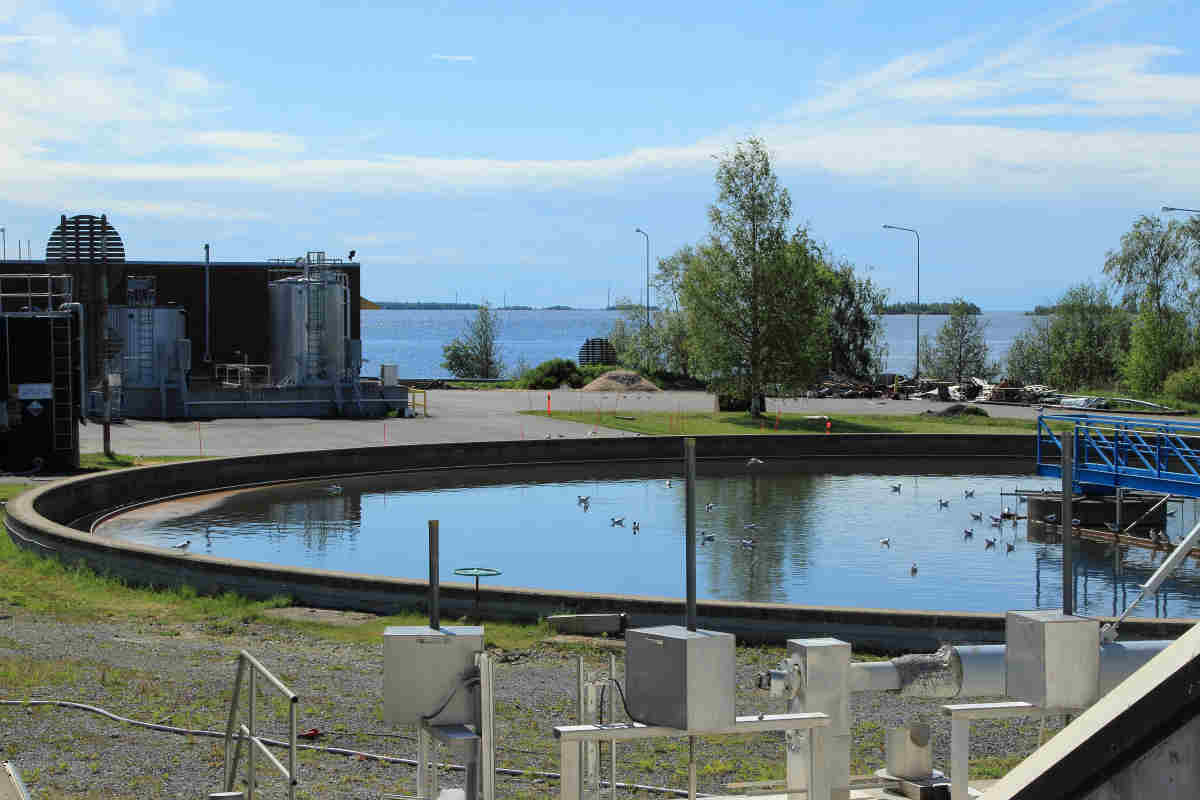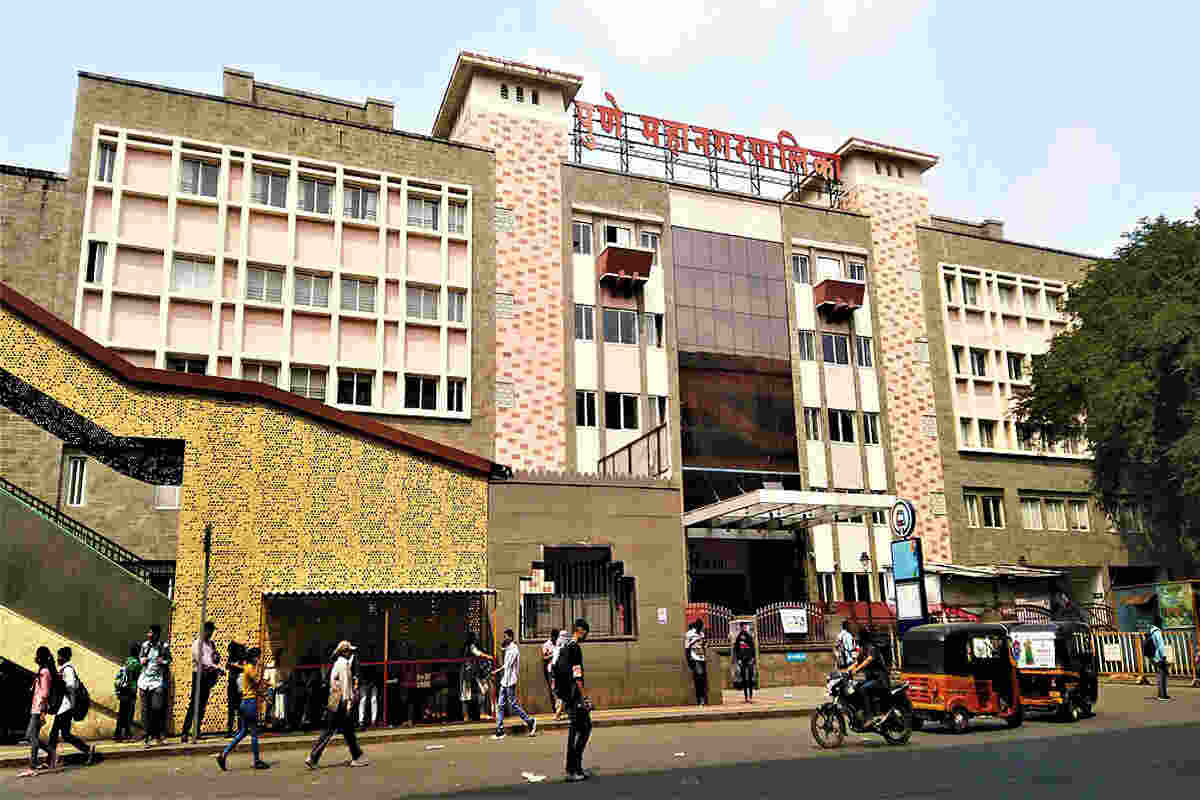The Global Plastic Pollution Crisis and the Need for Sustainable Clean-up Drives
In July 2021, a massive mound of plastic waste spanning several kilometers was discovered floating in the Caribbean Sea, drawing international attention. Known as the Great Caribbean Garbage Patch, it contained plastic bottles, bags, and microplastic particles, threatening local marine life and disrupting the livelihoods of fishermen. This shocking incident is not an isolated case.
According to a 2022 report by the United Nations Environment Programme (UNEP), the world generates approximately 400 million tonnes of plastic waste every year, of which only 9% is effectively recycled. The rest clogs waterways, litters coastlines, and disintegrates into microplastics that infiltrate food chains, posing a grave threat to human and ecological health.
Plastic pollution is no longer just an environmental issue—it is an escalating global crisis. Oceans alone receive over 11 million metric tons of plastic waste annually, which is projected to triple by 2040 if no corrective action is taken. The consequences are dire: sea turtles entangled in plastic nets, whales washed ashore with bellies full of plastic bags, and coral reefs suffocating under layers of plastic debris.
On land, improperly managed plastic waste clogs drainage systems, contributing to urban flooding and creating breeding grounds for diseases. Beyond ecological damage, plastic pollution also inflicts economic losses, costing the tourism, fishing, and shipping industries an estimated $13 billion per year globally.
Understanding the Plastic Pollution Problem: A Growing Environmental and Socioeconomic Crisis
In 1950, the world produced approximately 2 million tonnes of plastic annually. Today, that figure has skyrocketed to over 400 million tonnes, with production projected to double by 2050, according to a 2023 report by the Organisation for Economic Co-operation and Development (OECD). This rapid proliferation has far outpaced waste management capabilities, resulting in massive plastic accumulation in landfills, rivers, and oceans.
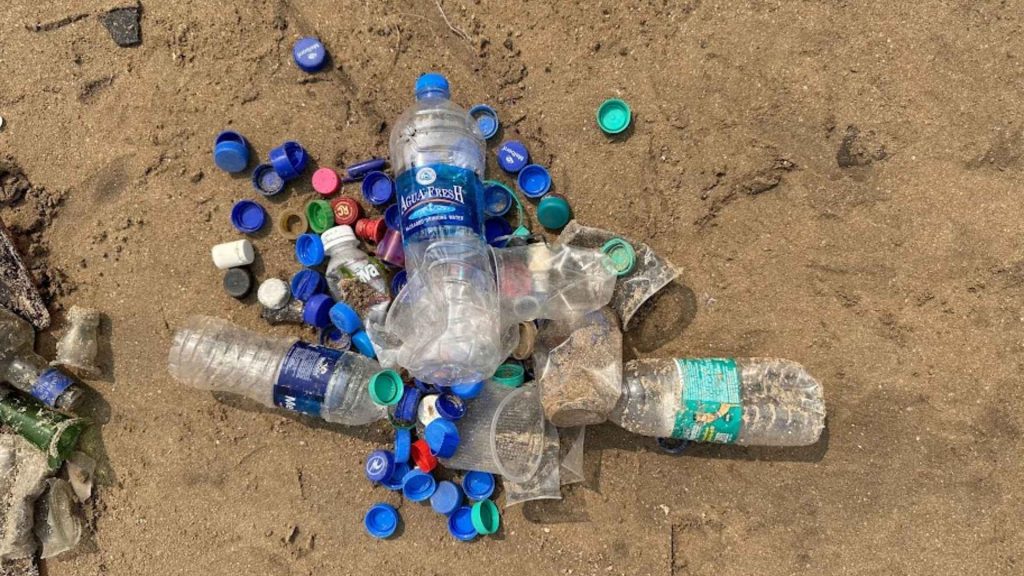
The United Nations Environment Programme (UNEP) estimates that around 11 million metric tonnes of plastic waste enter the oceans each year—equivalent to dumping a truckload of plastic into the sea every minute. If left unaddressed, this volume could triple by 2040, severely impacting both ecosystems and human livelihoods.
Microplastics—tiny plastic particles measuring less than 5 millimeters—are particularly insidious. These particles infiltrate water bodies, soil, and even the atmosphere. A 2022 study by the Environmental Science & Technology journal found that humans unknowingly consume an average of 52,000 microplastic particles per year through food, water, and air.
According to a 2022 study by Vrije Universiteit Amsterdam, microplastics were found in the blood samples of 80% of the participants, indicating that humans are constantly exposed to plastic contamination. Additionally, the burning of plastic waste—common in many low-income regions—releases dioxins and other toxic chemicals into the air, increasing the risk of respiratory diseases and cancers.
The economic cost of plastic pollution is equally alarming. The World Economic Forum (WEF) estimates that the annual economic damage caused by marine plastic pollution alone reaches $13 billion. This includes losses to fisheries and aquaculture, as fish stocks decline due to plastic ingestion and entanglement.
Step-by-Step Action Plan for Sustainable Plastic Clean-up Drives
Research and Planning Phase: Laying the Foundation
A successful clean-up drive begins with thorough site selection and assessment, ensuring that efforts are targeted where they are most needed. Identifying plastic pollution hotspots involves using scientific mapping techniques and environmental surveys. For instance, in 2021, The Ocean Cleanup, a non-profit organization, mapped the Great Pacific Garbage Patch using GPS-tagged waste and satellite imagery.
This method allowed them to pinpoint high-density plastic zones, making clean-up operations more effective. Similarly, local initiatives can collaborate with environmental agencies to identify heavily polluted areas, such as riverbanks, beaches, urban drainage systems, or parklands, where plastic waste accumulates due to stormwater runoff and human activity.
Once the site is selected, stakeholder collaboration becomes essential. Clean-up drives require the support of local authorities, non-governmental organizations (NGOs), and corporate sponsors. Partnering with municipal councils ensures access to waste collection services, while NGOs and corporates can provide funding, manpower, and logistical support.
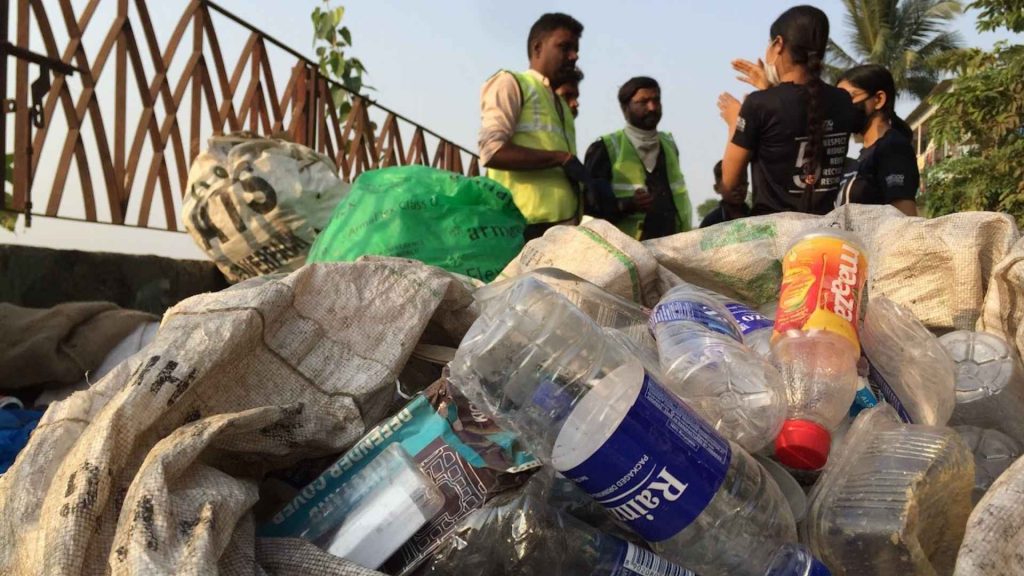
For example, in India’s Versova Beach Clean-up, activist Afroz Shah collaborated with the Brihanmumbai Municipal Corporation (BMC), schools, and corporate sponsors, mobilizing thousands of volunteers over three years to remove 5.3 million kg of plastic waste.
Community Mobilization and Awareness: Building Public Participation
To generate mass participation, volunteer recruitment and training must be well-structured. Platforms like Earth5R’s mobile app facilitate volunteer coordination by providing real-time updates, site locations, and safety protocols. Volunteer training should include proper handling of plastic waste, usage of protective gear, and basic safety guidelines.
For example, in the Philippines, the International Coastal Cleanup (ICC) provides protective gloves, waste bags, and first-aid support to all volunteers, ensuring their safety during beach clean-ups. Training sessions should also focus on waste segregation techniques, enabling volunteers to separate recyclable plastic from non-recyclable and hazardous waste effectively.
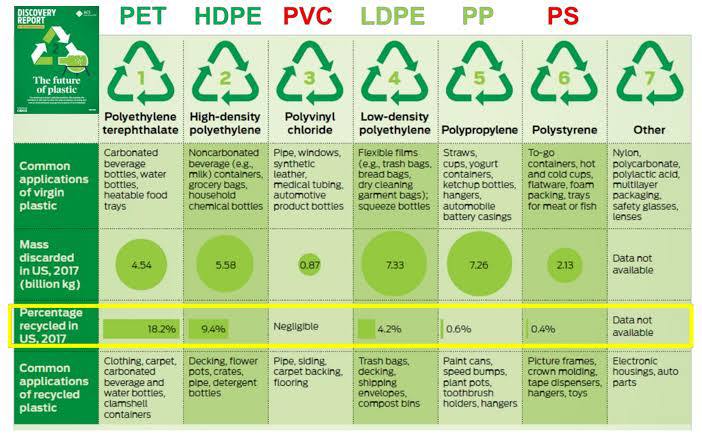
This infographic highlights simple yet impactful ways individuals can help protect the planet, including reducing waste, conserving water, and supporting sustainable practices.
Promoting the clean-up drive through social media, posters, and local influencers maximizes outreach. In 2019, the #Trashtag Challenge went viral on social media, encouraging thousands of people worldwide to clean littered areas and post before-and-after photos. Similar campaigns, coupled with local influencer partnerships, can significantly boost participation.
Execution of the Clean-up Drive: Turning Plans into Action
On the day of the clean-up, efficient logistics and waste collection strategies are essential. Organizing volunteers into small teams with designated roles—such as waste pickers, segregation coordinators, and transportation handlers—ensures smooth operations.
Volunteers should be equipped with reusable gloves, waste bags, and eco-friendly collection tools to minimize additional plastic waste generation. For example, the Let’s Do It Foundation, which organizes World Cleanup Day, employs GPS-based mobile apps to track waste collection in real time, improving coordination and accuracy.
During the clean-up, plastic segregation and recycling must be prioritized. Volunteers should separate recyclable plastic (PET bottles, HDPE containers) from non-recyclable waste, such as single-use plastics and contaminated items. In 2018, during a beach clean-up in Costa Rica, volunteers collected and categorized over 700 kg of plastic waste, which was sent to local recycling centers.
Ensuring Safety and Waste Disposal Efficiency
Once the plastic waste is collected, scientific waste disposal methods ensure that it does not return to the environment. Partnering with certified recycling facilities or municipal waste management services guarantees proper handling. For instance, Plastics for Change, an organization based in India, partners with local recyclers and manufacturers, turning collected plastic into reusable products, thereby reducing landfill waste.
Leveraging Technology and Data for Long-Term Impact
Integrating technology into plastic clean-up drives enhances efficiency and impact. Geo-tagging plastic hotspots, using drone surveillance, and employing waste-tracking apps streamline the collection process.
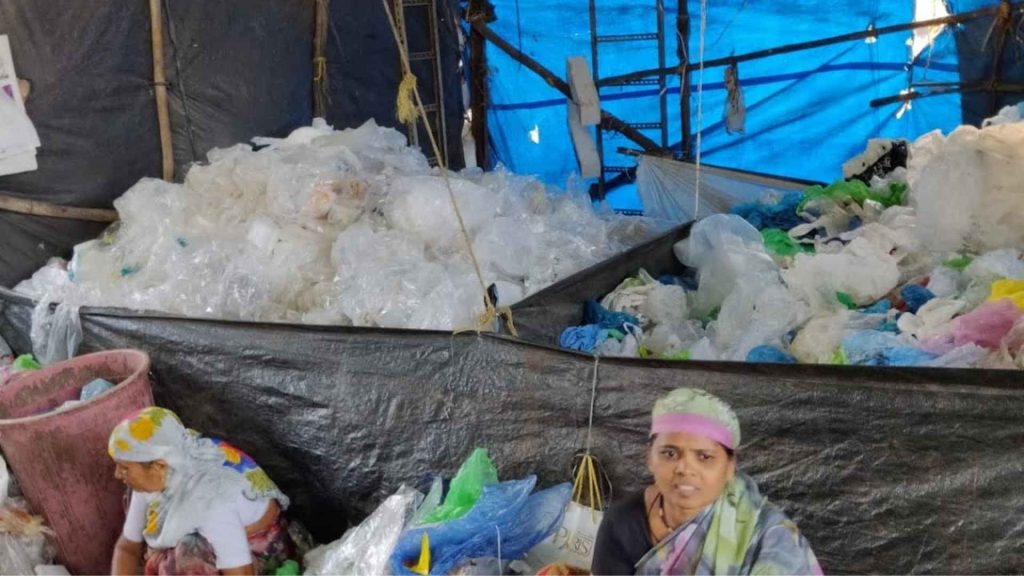
For instance, The Ocean Cleanup’s Interceptor technology uses automated river barriers to collect plastic waste before it enters oceans, significantly reducing plastic leakage. Data collection and analysis tools also help quantify the impact of clean-up drives, providing valuable insights for policymakers and stakeholders.
Transforming Clean-up Drives into Sustainable Movements
A plastic clean-up drive is not just a one-time event—it is the catalyst for broader environmental change. By incorporating research-backed strategies, community mobilization, and technological innovations, these drives can become sustainable movements that inspire long-term waste management practices.
As the world grapples with the plastic crisis, well-executed and scientifically driven clean-up drives represent a powerful solution for restoring ecosystems, protecting biodiversity, and fostering a culture of environmental responsibility.
Measuring Impact and Ensuring Sustainability: The Key to Lasting Change
Data Collection and Scientific Analysis: Quantifying the Impact
Accurately measuring the volume of plastic waste removed during a clean-up drive is the first step in evaluating its success. Volunteers and organizers record the weight and types of plastic collected, categorizing them into recyclable and non-recyclable waste.
For instance, during the International Coastal Cleanup (ICC) 2022, over 15 million pounds of trash were removed globally, with 60% consisting of plastic waste. Such large-scale data collection not only highlights the volume of pollution but also identifies waste patterns, such as the prevalence of single-use plastics.
Beyond measuring plastic volume, scientific indicators offer deeper insights into the environmental impact. By tracking reductions in plastic density, researchers can determine whether the clean-up has made a tangible difference.
For example, in Indonesia’s Citarum River restoration project, scientists monitored the river’s plastic content before and after clean-ups, observing a 40% reduction in floating debris over two years.
This data was backed by water quality tests, which showed lower levels of microplastic contamination post-clean-up. Incorporating such scientific analyses into local clean-ups ensures that the results are quantifiable and verifiable, making them more credible to policymakers and stakeholders.
Long-Term Monitoring: Ensuring Continued Ecosystem Recovery
The true success of a plastic clean-up drive is not only in the immediate waste removal but also in ensuring the long-term health of the cleaned environment. To achieve this, regular post-clean-up assessments are essential. Environmental organizations and local authorities conduct periodic surveys and water quality tests to monitor improvements or regressions.
In Manila Bay’s rehabilitation project, regular assessments revealed a gradual return of marine biodiversity, including the reappearance of small fish species that had previously vanished due to plastic pollution. This demonstrated that long-term monitoring is vital for documenting ecological recovery.
For example, in India’s River Yamuna clean-up, researchers observed the return of migratory birds to once-polluted wetlands, signaling ecological improvement. Documenting such biodiversity rebounds provides tangible proof of the clean-up’s environmental benefits.
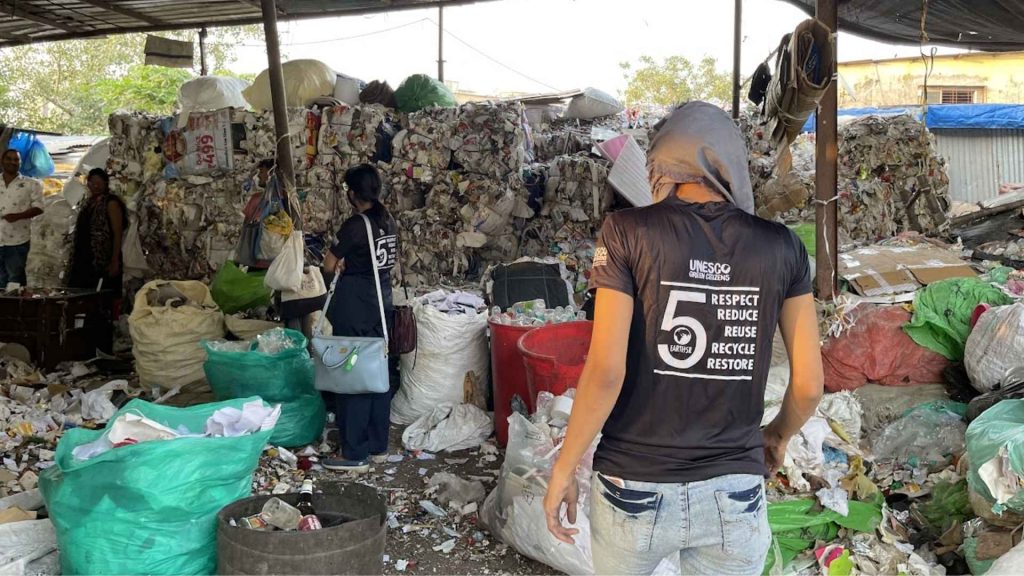
Involving local schools and colleges in the monitoring process fosters sustained community participation. Through citizen science programs, students and volunteers can contribute by conducting plastic density surveys, water quality testing, and biodiversity assessments. This not only makes long-term monitoring more feasible but also enhances public environmental literacy, inspiring future sustainability advocates.
Sustainability Strategies: Preventing Future Plastic Pollution
To maintain the benefits of a clean-up drive, sustainable practices must be integrated into the community’s daily life. One of the most effective strategies is to implement ongoing educational programs in schools, colleges, and local communities. By integrating plastic waste management and recycling education into school curriculums, future generations are equipped with the knowledge and motivation to prevent plastic pollution at the source.
For example, in Kenya’s Lamu Archipelago, schools adopted plastic-free policies and incorporated sustainability education into their programs, reducing plastic waste generation by 27% within two years.
Another critical sustainability strategy involves policy recommendations and advocacy. Collaborating with local governments and policymakers ensures that the clean-up’s impact is supported by legislative changes. For instance, following Bali’s beach clean-ups, environmental groups successfully lobbied for a ban on single-use plastics, preventing further pollution.
Similarly, Earth5R’s Dharavi plastic recycling model advocated for improved waste management policies, prompting municipal authorities to strengthen plastic collection and recycling mandates. Integrating policy changes into clean-up drives ensures that the positive outcomes are preserved through institutional support.
Leveraging Technology for Sustainable Impact
Technology plays a pivotal role in ensuring the sustainability of plastic clean-up drives. Mobile apps like Litterati and Debris Tracker allow participants to geotag and track plastic waste, creating data-driven visual maps of pollution hotspots. These digital platforms provide valuable insights into waste patterns and help identify recurring pollution areas, enabling more targeted clean-up interventions.
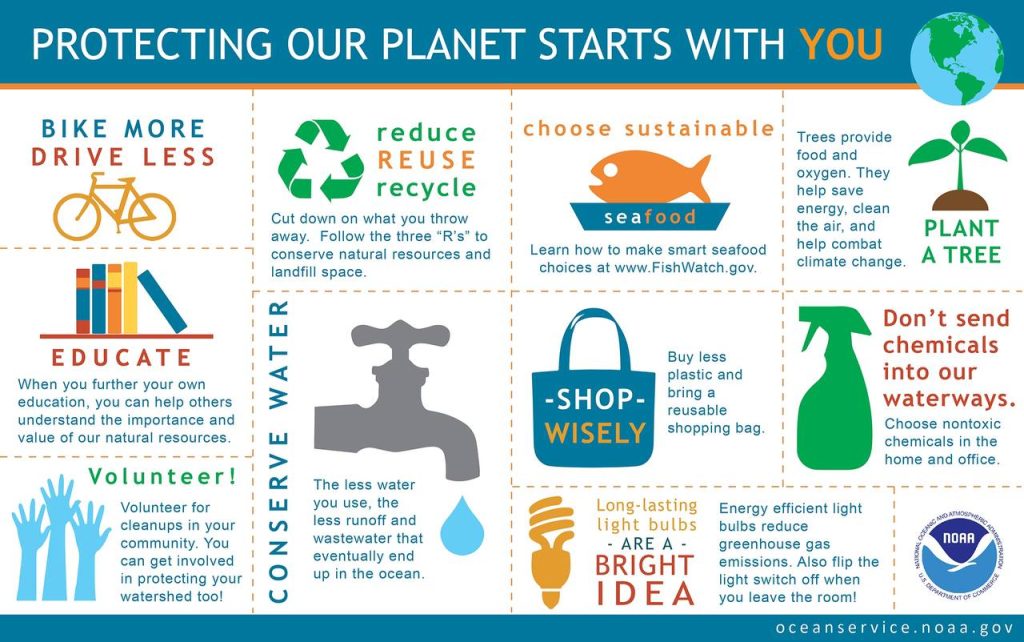
This chart categorizes different types of plastic, detailing their common applications, recycling rates, and the percentage of plastic waste recycled in the US as of 2017.
Additionally, blockchain technology is being increasingly used to trace plastic waste management. Companies like Plastic Bank utilize blockchain to track the recycling of plastic waste collected during clean-ups, ensuring transparency and accountability. This approach also promotes circular economies by allowing corporate sponsors to verify the impact of their funding, further encouraging long-term support for clean-up initiatives.
The Power of Consistent Action: Creating a Legacy of Sustainability
Measuring and sustaining the impact of plastic clean-up drives goes beyond waste collection—it requires scientific data collection, continuous monitoring, and policy integration. By incorporating long-term assessments, biodiversity tracking, and community-based sustainability strategies, clean-up initiatives can transform into enduring environmental movements.
Ultimately, the true measure of success lies not only in the volume of plastic removed but in the lasting behavioral and systemic changes they inspire. Sustainable clean-ups empower communities, restore ecosystems, and drive legislative reforms, leaving behind a legacy of environmental responsibility.
Case studies from Earth5R : Real life impact
Earth5R, a prominent environmental organization, has developed comprehensive strategies for sustainable plastic clean-up drives. Their initiatives emphasize community involvement, scientific research, and circular economy principles. Below are summaries of key articles from Earth5R detailing their step-by-step action plans:
Earth5R’s Guide to Launching a Community River Cleanup: The Mithi River Model
This article outlines Earth5R’s systematic approach to restoring Mumbai’s Mithi River. The strategy combines scientific research, community mobilization, and sustainable waste management to create a replicable blueprint for river restoration. By engaging local communities and stakeholders, Earth5R demonstrates how collaborative efforts can lead to significant environmental improvements.
Cleanup Projects for River, Lake & Beach
Earth5R emphasizes the importance of restoring water bodies like rivers, lakes, and beaches, which are vital to ecosystems and local communities. The article discusses the adverse effects of pollution, such as disease proliferation and reduced water storage capacity, and highlights the benefits of cleanup projects, including enhanced ecological health and climate change mitigation. It also presents data on lake pollution and human impacts on water bodies in India, underscoring the need for comprehensive cleanup initiatives.
The Complete Guide to Conducting Sustainability Workshops
This guide provides insights into organizing sustainability events, including meetups and clean-up drives, to engage participants effectively. It emphasizes the role of education and community involvement in promoting environmental stewardship and offers practical steps for hosting impactful workshops that inspire collective action toward sustainability.
Mumbai River Cleanup CSR Project
Focusing on corporate social responsibility (CSR), this article discusses strategies for integrating environmental and social initiatives. It advocates for establishing local markets for products made from recycled plastic and promoting upcycling businesses by supporting entrepreneurs who create value-added products from recycled materials. This approach not only addresses plastic pollution but also fosters economic development within communities.
One Solution to All the Environmental Problems: How Circular Economy Can Save Mumbai
Earth5R explores the concept of a circular economy as a holistic solution to environmental challenges in Mumbai. The article highlights initiatives such as recycling plastic waste and valorizing mixed plastic waste and bio-waste into valuable fuels, chemicals, bioenergy, and bio-fertilizers. It underscores the importance of citizen awareness and engagement in implementing circular economy practices to achieve sustainable urban development.
Yamuna River Pollution and Sustainable Solutions for the Future
Addressing the severe pollution of the Yamuna River, particularly downstream of New Delhi, this article examines the sources of contamination, including domestic waste and industrial effluents. It discusses the environmental and health impacts of the polluted river and proposes sustainable solutions for its restoration, emphasizing the need for comprehensive waste management and community participation.
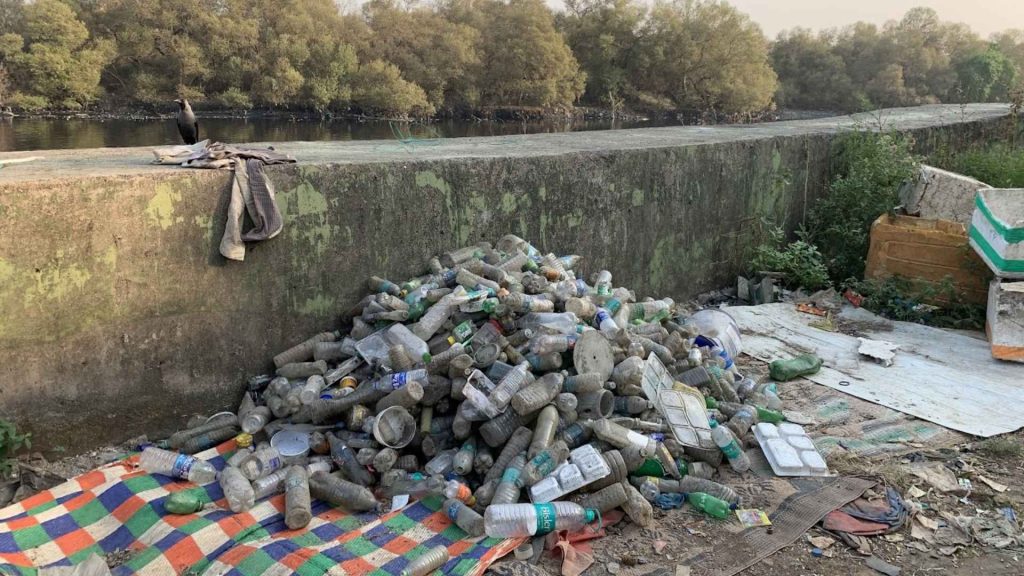
A New Approach to Restoration of Mithi River, India
This article details Earth5R’s innovative approach to restoring Mumbai’s Mithi River, focusing on circular economy principles and sustainable planning. The initiative ensures that collected plastic waste does not end up in landfills but is reintegrated into the economy to generate income for local communities, demonstrating a sustainable model for environmental restoration.
These articles collectively provide a comprehensive framework for initiating and sustaining plastic clean-up drives, emphasizing the importance of community engagement, scientific research, and sustainable waste management practices.
Benefits and Broader Implications: Creating Lasting Environmental and Social Change
Environmental Benefits: Restoring Nature and Reducing Plastic Contamination
In Versova Beach, Mumbai, a three-year clean-up campaign led by Afroz Shah and local volunteers removed over 20 million kilograms of plastic waste, transforming the once-polluted beach into a nesting site for endangered Olive Ridley turtles. This remarkable biodiversity comeback highlighted the immediate ecological benefits of sustained plastic removal efforts.
Clean-up drives also significantly reduce microplastic contamination in water bodies. According to a 2019 study published in Environmental Science & Technology, nearly 90% of tap water samples worldwide contain microplastics.
By removing larger plastic waste before it breaks down into microplastics, clean-up initiatives prevent further contamination of aquatic ecosystems. In Norway’s Oslo Fjord, clean-up efforts resulted in a 35% reduction in microplastic density in the water, contributing to improved water quality and reduced toxicity for marine life.
Social and Educational Benefits: Fostering Environmental Awareness and Community Unity
Earth5R’s Mithi River clean-up project included educational workshops in schools, where students were taught about plastic waste segregation, recycling techniques, and the impact of pollution on local biodiversity. This hands-on learning approach helped cultivate a generation of environmentally responsible citizens, driving long-term behavioral change.
In Manila Bay, Philippines, a massive volunteer-driven clean-up involving over 45,000 individuals not only restored the coastline but also reinforced community solidarity, with local groups continuing to organize regular maintenance clean-ups.
Furthermore, public engagement through social media campaigns amplifies the educational impact of clean-up drives. Initiatives like #TrashtagChallenge, which encouraged people worldwide to share before-and-after images of cleaned areas, inspired millions of volunteers globally to participate in clean-up efforts. This viral movement showcased how awareness-driven actions can create global momentum for sustainability.
Economic Benefits: Boosting Local Economies and Creating Green Jobs
Clean-ups further boost local economies by enhancing the tourism potential of natural areas. Littered beaches, rivers, and parks often deter tourists, negatively impacting local businesses and economies. However, clean-up drives that restore these areas improve their aesthetic and recreational appeal, attracting more visitors.
A 2018 study by the University of Plymouth found that beach cleanliness directly influences tourism revenue, with clean beaches generating up to 40% more income for local businesses. Thus, regular plastic clean-ups can revitalize tourism-dependent communities, driving economic growth.
Plastic waste collected during drives is often repurposed into marketable products, such as eco-bricks, reusable bags, and decorative items. In Kenya’s “Plastic for Change” program, women from local communities were trained to upcycle collected plastic waste into jewelry and home décor items, providing them with stable incomes and financial independence.
Inspiring a Global Movement: The Ripple Effect of Plastic Clean-up Drives
Beyond the immediate local impact, plastic clean-up drives have broader global implications, inspiring similar movements worldwide. Successful initiatives, such as the Ocean Conservancy’s International Coastal Cleanup, have sparked global participation, with millions of volunteers in over 100 countries contributing annually.
Furthermore, the data and research insights generated from clean-up drives serve as valuable resources for policymakers. Scientific data on plastic density, pollution hotspots, and waste patterns helps governments and environmental organizations make informed decisions about waste management policies and regulations.
For example, in Rwanda, data from local clean-up initiatives influenced the government’s decision to implement a nationwide ban on plastic bags, significantly reducing plastic waste generation.
A Catalyst for Lasting Environmental and Societal Change
Plastic clean-up drives, when executed effectively, go beyond waste removal—they become catalysts for broader environmental, social, and economic transformation. The restoration of ecosystems, reduction of microplastic contamination, and promotion of biodiversity contribute to healthier natural environments, while the educational and social benefits cultivate eco-conscious communities.
Moreover, the economic gains through job creation, upcycling industries, and increased tourism revenue demonstrate that plastic clean-up initiatives can drive sustainable economic growth.
The Road to a Plastic-Free Future—One Clean-Up Drive at a Time
At their core, plastic clean-up drives empower individuals and communities to take ownership of their local environments. Whether it’s a coastal cleanup in Mumbai or a river restoration effort in Kenya, each initiative contributes to a larger global movement. The collective impact of these drives is not just measured in tons of waste removed but in the shifts in behavior, awareness, and policy reforms they inspire.
For instance, the Versova Beach clean-up in India not only cleared millions of kilograms of waste but also triggered long-term governmental interventions, leading to improved waste management policies in Mumbai. This demonstrates how local grassroots actions can influence larger, systemic changes.
The step-by-step action plan outlined in this article offers a scientifically-backed and replicable model for organizing clean-up drives anywhere in the world. From the meticulous planning phase, which involves site selection and stakeholder collaboration, to the execution and post-cleanup sustainability strategies, this framework ensures that clean-ups are effective, impactful, and enduring.
FAQs on Step-by-Step Action Plan for Sustainable Plastic Clean-up Drives
What is the purpose of a plastic clean-up drive?
A plastic clean-up drive aims to remove plastic waste from the environment, prevent further pollution, and promote sustainable waste management practices. These initiatives also raise awareness about plastic pollution and encourage behavioral changes toward responsible consumption and disposal.
How do I choose the right location for a plastic clean-up drive?
When selecting a location, prioritize areas heavily impacted by plastic waste, such as beaches, rivers, parks, or urban areas with visible litter accumulation. Conduct a preliminary assessment to map pollution hotspots and consider accessibility, safety, and logistical feasibility.
What types of plastic waste are commonly collected in clean-up drives?
Common types of plastic waste include single-use plastics (bottles, bags, straws), packaging materials, food wrappers, microplastics, and discarded plastic products. Many drives also encounter industrial plastic waste in urban areas.
How can I mobilize the local community to participate in a clean-up drive?
Community mobilization involves targeted awareness campaigns through social media, schools, and local events. Organizing workshops and interactive sessions helps educate people about the impact of plastic pollution and encourages them to participate actively.
What role do volunteers play in plastic clean-up drives?
Volunteers are the backbone of plastic clean-up drives, participating in waste collection, segregation, and data recording. They also help in awareness campaigns, educational workshops, and post-cleanup analysis, making the initiative more effective and impactful.
How can plastic waste be safely collected and handled during a clean-up?
Plastic waste should be collected using gloves, reusable bags, and proper safety gear. Volunteers should be trained on safe handling techniques, including how to identify and separate hazardous waste. Use color-coded bags for segregation to streamline recycling.
What is the importance of waste segregation in clean-up drives?
Waste segregation ensures that recyclable plastics are separated from non-recyclable and hazardous waste. This practice reduces landfill waste, promotes effective recycling, and increases the efficiency of waste management processes.
How do you measure the success of a plastic clean-up drive?
Success is measured by quantifying the amount of plastic collected, assessing the reduction in pollution levels, and tracking community participation and behavioral changes. Scientific indicators such as microplastic reduction and biodiversity recovery are also used.
What are the long-term sustainability strategies for clean-up drives?
Long-term sustainability involves regular monitoring of cleaned areas, continuous educational programs in schools, and forming community task forces. Partnering with local governments can help enforce policies to prevent future pollution.
How do plastic clean-up drives benefit the environment?
Clean-up drives restore natural ecosystems, reduce plastic contamination in water bodies, and protect wildlife from plastic ingestion. They also prevent soil and water pollution caused by microplastics and toxic chemicals from degraded plastics.
What are the economic benefits of plastic clean-up drives?
Plastic clean-up drives create green jobs in waste management and recycling industries. They also boost local economies by enhancing tourism in cleaner areas. Upcycling initiatives generate revenue from recycled products, benefiting local communities.
How can students and schools contribute to clean-up drives?
Students can participate as volunteers, helping with plastic collection, data recording, and awareness campaigns. Schools can integrate clean-up drives into their curriculum, offering service-learning credits or eco-club memberships.
What scientific methods are used to monitor the impact of plastic clean-ups?
Scientific monitoring includes water quality testing, biodiversity assessments, and plastic density analysis. Metrics like BOD, COD, and microplastic concentration help measure environmental improvements post-cleanup.
How can technology enhance the effectiveness of clean-up drives?
Technology such as GPS mapping, waste tracking apps, and drone surveys improves the efficiency and accuracy of clean-up drives. It also helps in data collection and impact analysis, ensuring the drives are well-documented and measurable.
How do you ensure that the collected plastic waste is sustainably managed?
Collected plastic is segregated, recycled, and repurposed. Partnering with recycling facilities ensures proper waste management. Some plastic waste is upcycled into eco-products, while non-recyclable plastic is safely disposed of.
What safety measures should be followed during a clean-up drive?
Safety measures include providing gloves, masks, and protective gear to volunteers. Participants should be briefed on handling hazardous waste, hydration tips, and emergency protocols to prevent accidents or health issues.
How can clean-up drives influence policy changes?
By collecting scientific data and evidence, clean-up drives can advocate for stronger waste management policies. Collaboration with local authorities and environmental organizations can lead to legislative reforms and stricter regulations on plastic disposal.
How can businesses support plastic clean-up drives?
Businesses can contribute by sponsoring equipment, providing volunteers, and offering logistical support. Many companies also participate through CSR (Corporate Social Responsibility) programs, funding clean-up initiatives and promoting sustainability.
What are the challenges faced during large-scale clean-up drives?
Challenges include logistical issues, insufficient volunteer participation, and lack of waste disposal infrastructure. Weather conditions, local resistance, and funding constraints can also affect the success of large-scale clean-up efforts.
How can clean-up drives promote long-term behavioral change?
By educating participants about plastic pollution and its consequences, clean-up drives inspire sustainable practices, such as responsible waste disposal and reduced plastic consumption. School programs, eco-clubs, and social media campaigns reinforce these changes over time.
Call to Action: Join the Movement for a Plastic-Free Future
The fight against plastic pollution demands collective action and long-term commitment. While large-scale policies and regulations are vital, grassroots initiatives like plastic clean-up drives play an equally significant role in restoring ecosystems and protecting future generations. By following this step-by-step action plan, schools, colleges, local organizations, and individuals can launch impactful clean-up projects that not only remove plastic waste but also promote sustainable practices.
Parents and teachers can inspire children by organizing educational workshops and clean-up events, fostering a sense of environmental responsibility from a young age. Businesses can support the cause through corporate social responsibility (CSR) partnerships, providing financial aid, resources, and volunteers. Most importantly, individuals can make a difference by reducing their plastic footprint, advocating for better waste management policies, and participating in or organizing local clean-up drives.
The path to a plastic-free future begins with small, consistent actions. Whether you’re picking up litter in your neighborhood, raising awareness on social media, or collaborating with organizations like Earth5R, your contribution matters. Together, we can transform plastic clean-ups into a global movement—one that not only restores our environment but also reshapes our relationship with plastic. Join the movement today and be a part of the solution.


